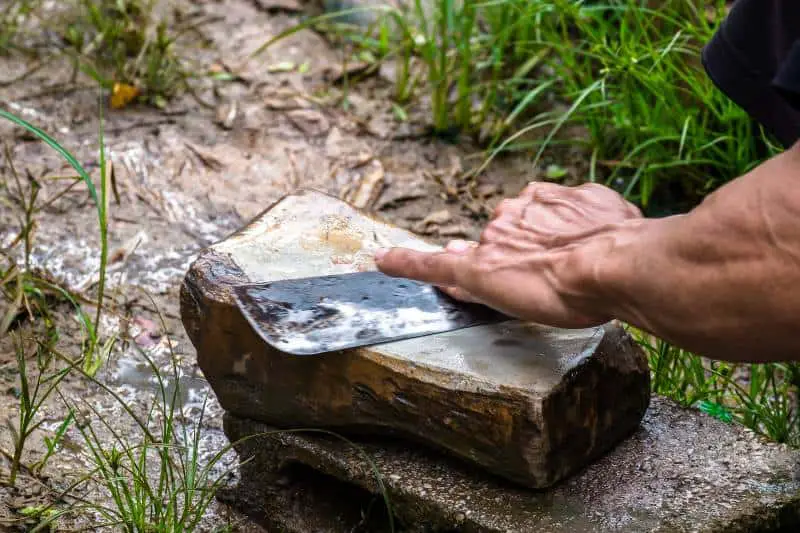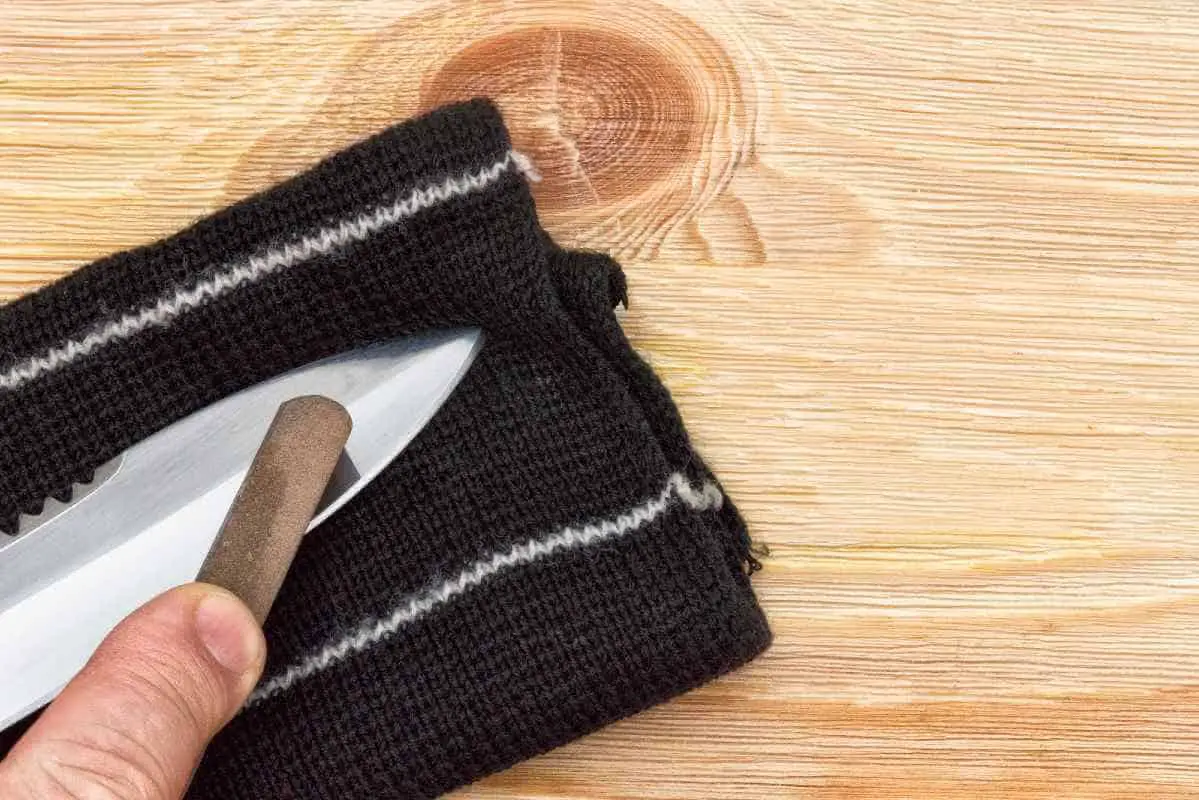If you have ever worked with a knife before, you would know that a dull knife is more dangerous than sharp ones. But how do you sharpen a kitchen knife without a sharpener? Say, if you recently moved and the rest of your tools are still in their boxes. If you’re out camping, hiking, or fishing. Ordered your Whetstone sharpener two days ago and it’s yet to be mailed. Or just cannot wait for the scheduled sharpening with a Pro!
I’ll admit I’ve been in one of these situations once or twice before. This is what lead me to these helpful discoveries I’m about to share with you.
Things to remember whenever you’re sharpening your knives:
ALWAYS wear cut resistant gloves. Especially since we’re using tools or objects that are not specifically designed to sharpen knives.
DO NOT use your hand to test the sharpness of the knife’s blade. I see a lot of people doing this and this is not the way to do it. The best and one of the most common methods is the “Tomato Test”. Grab a piece of tomato and run the knife through it. If it cuts through the skin effortlessly, then your blade is sharp enough.
ALWAYS make sure that your improvised sharpener is in a stable position before you start sharpening your knife. The best way to do this is to put a damp towel underneath it to keep them in place while you’re working on your knife.
Things you’ll find at home that can be used as a knife sharpener:
Any porcelain or ceramic dishware. Usually a mug, a plate or a bowl. Most ceramic and porcelain dishware have that rough edge at the bottom. You can use this edge to sharpen your knife. Draw the blade on it at a 10° angle. Do this several times for both sides until they’re sharp. Make sure to draw the blade downwards against you in slow, gentle strikes.
Nail file or sandpaper. They have the closest texture to an actual sharpening stone. This makes them one of the most effective alternative when you don’t have a whetstone handy. This also makes a practical portable sharpener if you’re going on a hiking or camping trip. Strike full length of the blade down the nail file at a 10° angle. Make sure it’s facing away from you. Repeat this on both sides until they’re sharp to your liking.
Another knife. Now, this is something you usually see chefs do in movies. It works, BUT do not strike the blade on the other knife’s blade – it will chip both knives. Instead, use the back of the spine of the second knife as a sharpener. Hold the blade you want to sharpen using your dominant hand. Strike the knife away from you at a 10° angle until it’s sharp on both sides.
Old leather belt. This is more “stropping” your knife than sharpening. You can use an old genuine leather belt to straighten the edge of a dull knife. Lay the belt on a flat surface. Then glide the knife’s blade against it at a 10° angle on both sides until it’s sharp.
Things you’ll find in your surroundings that can be used as a knife sharpener:

A block of concrete or a flat rock. This is not the most sanitary method, but it works. Make sure to wash the knife properly after you sharpen it. This is one of the best hacks to remember when you’re in an outdoor environment. Look around for a rough, flat rock or block of concrete. Clean it as much as you can. Keep it slightly wet like you would with a whetstone. Use the same 10° angle and stroke it facing away from you until it’s sharp on both sides.
Car window. This method is also more for honing than sharpening. It will help with a slightly blunt knife but if it’s completely dulled already, best to look for rock instead. Slide the blade back and forth against the window edge at a 10° angle. Repeat this for about 6 to 8 times until the knife is sharp on both sides.
Now you know there’s a lot of knife sharpeners hiding in plain sight. Which one of these have you tried before? Leave us a comment below! 😉


